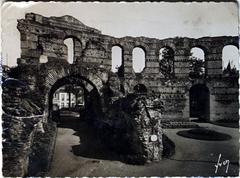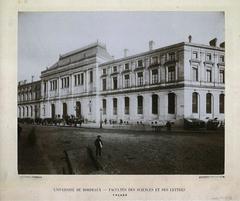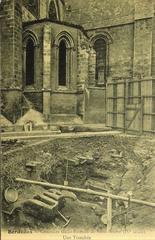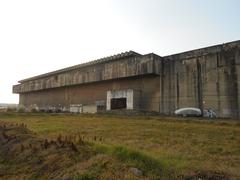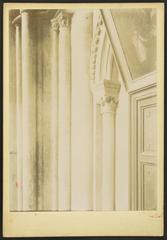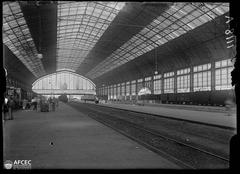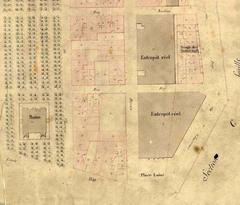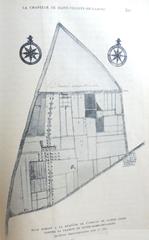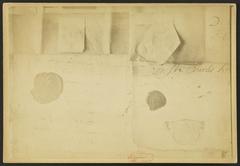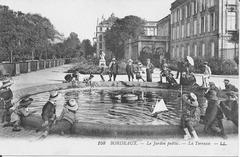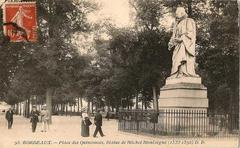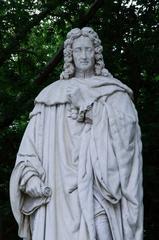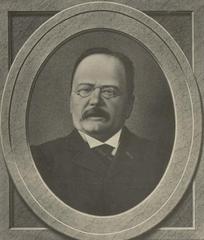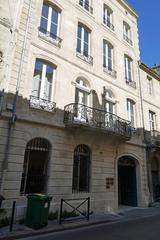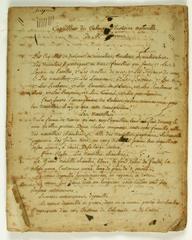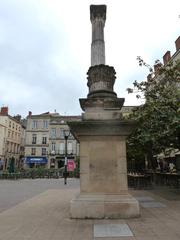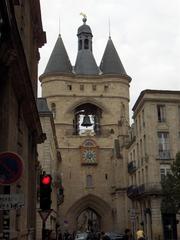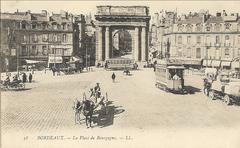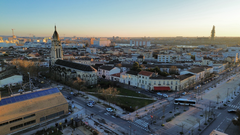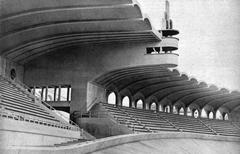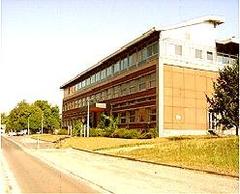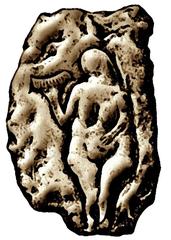
Chartreuse Cemetery Bordeaux: Visiting Hours, Tickets, and Historical Sites Guide
Date: 04/07/2025
Introduction
Chartreuse Cemetery (Cimetière de la Chartreuse), located in the heart of Bordeaux, France, is a remarkable testament to the city’s rich cultural, historical, and artistic heritage. As Bordeaux’s oldest and largest burial ground, it stands as both a significant necropolis and an open-air museum, showcasing over two centuries of funerary art and reflecting the city’s social evolution. Established in 1791 on former Carthusian monastic lands, Chartreuse Cemetery is not only a place of remembrance but also a key site for cultural tourism and historical education (Bordeaux.fr; Wikipedia).
This comprehensive guide provides an in-depth look at Chartreuse Cemetery’s history, architectural features, notable burials, visitor information including hours and ticketing, and tips to enhance your visit.
Table of Contents
- Origins and Historical Development
- 19th-Century Expansion and Artistic Heritage
- Notable Burials and Monuments
- Administrative History and Heritage Recognition
- Architectural Highlights
- Chartreuse Cemetery in Bordeaux’s Urban Context
- Visitor Information: Hours, Tickets, and Accessibility
- FAQs
- Plan Your Visit: Tips and Recommendations
- References
Origins and Historical Development
Chartreuse Cemetery’s origins are closely tied to Bordeaux’s religious and urban transformation. The grounds were initially owned by Carthusian (Chartreux) monks, who, in the early 17th century, established the Notre-Dame-de-Miséricorde convent on what was then marshland. In 1610, Cardinal-Archbishop François de Sourdis oversaw extensive drainage works, converting the area into fertile gardens for the convent (Bordeaux.fr).
The French Revolution brought about the confiscation of religious properties, and in 1791, the land was formally established as a public cemetery (Archives Bordeaux Métropole). The remaining baroque gateway from the original convent now serves as the cemetery’s northern entrance, offering a tangible link to its monastic roots.
19th-Century Expansion and Artistic Heritage
During the 19th century, Chartreuse Cemetery evolved into an open-air museum of funerary art. This period saw the construction of elaborate monuments reflecting the tastes and aspirations of Bordeaux’s bourgeoisie. The cemetery features a broad range of architectural styles, such as neoclassical pyramids, neo-Gothic chapels, and intricate sculptures (Wikipedia; Gironde Tourisme).
Influenced by wider European cemetery trends, Chartreuse’s park-like layout and monumental character echo the design philosophies of contemporaneous sites like Père-Lachaise in Paris, blending remembrance with artistic expression.
Notable Burials and Monuments
Chartreuse Cemetery is the resting place for many of Bordeaux’s renowned figures, including:
- Flora Tristan: Influential feminist writer and grandmother of Paul Gauguin (Bordeaux.fr).
- Francisco Goya: The Spanish master painter who died in Bordeaux in 1828. While his remains were later repatriated to Spain, a cenotaph remains at Chartreuse (Invisible Bordeaux).
- Jean-Victor Moreau: A notable general whose heart is interred in a small Roman-style temple within the cemetery.
- Jean-Baptiste Lynch: Bordeaux’s mayor during the Napoleonic period, whose tomb reflects his political stature.
- Pierre Lacour: Celebrated painter and founder of the Musée des Beaux-Arts de Bordeaux.
The cemetery also commemorates war victims, notably through the monument aux morts de Bougie, which honors those lost in World Wars I and II (Wikipedia).
Administrative History and Heritage Recognition
Systematic burial records began in 1814; these are now digitized and accessible online, offering a valuable resource for historical and genealogical research (Archives Bordeaux Métropole). By the early 20th century, the cemetery reached capacity, prompting the creation of the Cimetière Nord in Bruges in 1910.
Chartreuse Cemetery was officially recognized as a Monument Historique in 1921, solidifying its status as a protected site of cultural and architectural significance (Wikipedia).
Architectural Highlights
Chartreuse’s landscape is a tapestry of artistic styles and historical memories. The surviving baroque gateway stands as a reminder of the site’s origins. Inside, visitors encounter grand family vaults, ornate mausoleums, and unique sculptures representing artistic movements from neoclassicism and romanticism to eclecticism and Art Nouveau (Building on the Built).
Recent projects such as the 2023 Columbarium and Garden of Remembrance, designed by Jenna Kaës, Martial Marquet, and Renan Rousselot, demonstrate ongoing preservation and innovation within the cemetery (Building on the Built).
Chartreuse Cemetery in Bordeaux’s Urban Context
Conveniently situated within Bordeaux’s UNESCO World Heritage perimeter, Chartreuse Cemetery is easily accessible via tramway lines B and C (stops: Gaviniès, Hôtel de Police, Saint-Bruno-Hôtel de Région) and several bus routes (Geneanet). Its proximity to other historical landmarks, such as the Basilique Saint-Seurin and Cathédrale Saint-André, makes it an essential stop for visitors exploring Bordeaux’s cultural legacy.
Over time, Chartreuse has transformed from monastic gardens to a civic necropolis, reflecting the city’s growth and secularization while offering a living archive of Bordeaux’s past (UNESCO Bordeaux).
Visitor Information: Hours, Tickets, and Accessibility
- Visiting Hours: Chartreuse Cemetery is open Monday to Saturday from 8:30 am to 5:00 or 6:00 pm (depending on season), and Sundays/Public Holidays from 9:00 am to 5:00 pm. Summer hours may be extended (Petit Futé).
- Entry Fees: Admission is free for all visitors. Guided tours can be booked through the Bordeaux Tourist Office or local heritage organizations (Bordeaux Tourism).
- Accessibility: Main paths are paved and wheelchair accessible, though some older areas may be uneven. Benches and restrooms are available near the main entrance.
- Maps: Obtain a map at the entrance or download from the Bordeaux Tourism website to help navigate the site.
- Etiquette: Visitors are expected to be respectful—keep noise low, avoid stepping on graves, and photograph discreetly. Pets are not allowed except for service animals.
Frequently Asked Questions (FAQs)
Q: What are the visiting hours for Chartreuse Cemetery?
A: Monday to Saturday: 8:30 am–5:00/6:00 pm; Sundays/Public Holidays: 9:00 am–5:00 pm. Summer may have longer hours.
Q: Is there an entry fee?
A: No, admission is free.
Q: Are guided tours available?
A: Yes, through the Bordeaux Tourist Office or heritage organizations. Most tours are in French; check for English-language options.
Q: Is the cemetery accessible for people with limited mobility?
A: Main paths are accessible, but older sections may be uneven. Consult the administrative office for guidance.
Q: Can I take photos?
A: Yes, photography is allowed. Please be discreet and respectful, particularly during funeral services.
Q: How do I get there?
A: Use tram lines B or C to Gaviniès, Hôtel de Police, or Saint-Bruno-Hôtel de Région stops. Several bus lines also serve the area.
Plan Your Visit: Tips and Recommendations
- Wear Comfortable Shoes: Expect to walk over varied terrain.
- Bring Water: Especially in summer months; no refreshments are available within the cemetery.
- Use a Map: The grounds are extensive and can be labyrinthine.
- Combine Visits: Nearby attractions include Basilique Saint-Seurin and Bordeaux’s museums.
- Consider a Guided Tour: These enrich your understanding of the cemetery’s history and artistic features.
Interactive maps, virtual tours, and high-quality images are available on the Bordeaux Tourism website.
Summary
Chartreuse Cemetery epitomizes Bordeaux’s historical and cultural vibrancy. From its monastic origins to its role as a modern repository of memory, art, and heritage, the cemetery welcomes visitors year-round with free admission and accessible facilities. Whether you’re an art enthusiast, historian, or casual tourist, Chartreuse Cemetery offers an immersive journey through the city’s past and a tranquil space for reflection.
For the best experience, download the Audiala app for audio guides and event updates, and follow local tourism channels for news on restoration projects and special events.
References
- Visiting Chartreuse Cemetery in Bordeaux: History, Monuments, and Practical Information (Bordeaux.fr)
- Chartreuse Cemetery (Cimetière de la Chartreuse) Wikipedia (Wikipedia)
- Chartreuse Cemetery in Bordeaux: A Must-Visit Historical and Artistic Site with Practical Visitor Information (Gironde Tourisme)
- Francisco Goya in Bordeaux (Invisible Bordeaux)
- Chartreuse Cemetery Visiting Hours and Visitor Guide (Bordeaux Tourisme)
- Chartreuse Cemetery Guided Tours PDF (Fleur Explore Bordeaux PDF)
- Chartreuse Cemetery and Bordeaux UNESCO World Heritage (UNESCO Bordeaux)
- Archives Bordeaux Métropole: Burial Registers Online (Archives Bordeaux Métropole)
- Site-Specific Columbarium in Bordeaux (Building on the Built)
- Petit Futé: Chartreuse Cemetery Bordeaux (Petit Futé)



